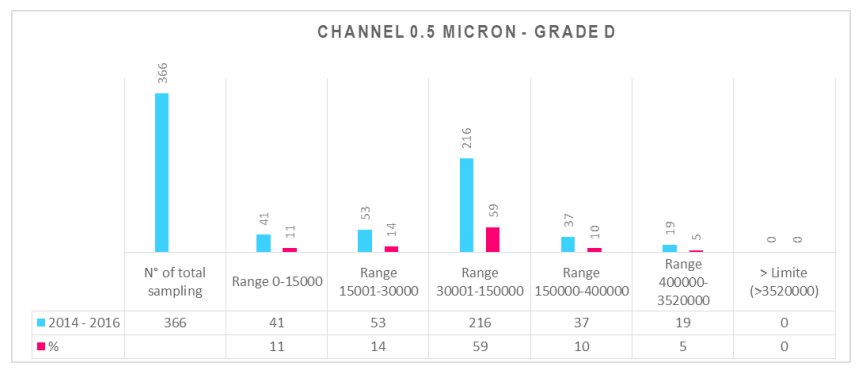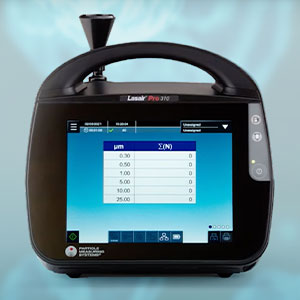Selecting the right monitoring technique is pivotal in cleanroom contamination control. These specialized environments demand rigorous standards to ensure product integrity and safety. They are, after all, responsible for some of the most hygiene-critical applications on earth, from pharmaceutical manufacturing facilities to semiconductor fabrication plants.
To minimize the risk of contamination and provide the highest cleanliness levels, stringent regulatory standards are implemented for cleanroom monitoring. These regulations help to provide more control over their environments. Examples of these standards include ISO 14644-1:2015 and the European Good Manufacturing Practice (EU GMP) Annex 1.
The principles set by ISO 14644-1:2015 and EU GMP Annex 1 stand as critical benchmarks for cleanroom monitoring. They offer a comprehensive framework for managing airborne molecular contamination, a critical factor in maintaining the integrity of pharmaceutical manufacturing processes.
ISO 14644-1:2015 offers a systematic approach to measuring and controlling airborne particulates within cleanrooms. Essentially, it works by analyzing a set amount of air volume to understand its number of particle concentrations. These particles will determine the overall classification of air cleanliness. Ultimately, this standard is instrumental in establishing acceptable limits for particle counts, influencing the design, operation, and monitoring of cleanroom environments.
EU GMP Annex 1 supplements these guidelines by setting requirements for manufacturing medicinal products. It focuses on the importance of microbiological control in relation to particulate standards.
Together, these documents form a cohesive set of guidelines that drive the implementation of effective contamination control strategies in pharmaceutical cleanrooms. Adhering to the principles outlined in ISO 14644-1:2015 and the EU GMP Annex 1 can achieve optimal cleanroom performance. That way, pharmaceutical manufacturers can ensure that their cleanrooms can meet the rigorous demands of product safety and quality.
If you are interested in learning how to apply limits in cleanroom monitoring, we invite you to read on. Our article will consider the nuances of cleanroom classification, focusing on the significance of airborne contamination control as verified through the aforementioned standards.
We will look at these standards in more detail, examining their criteria, implementation challenges, and impact on pharmaceutical manufacturing. That way we can shed some light on the role of standardized cleanroom practices in upholding product integrity and patient safety.
Maximum Permitted Length of Tubing
The physical setup of monitoring equipment is pivotal for the accuracy and reliability of particle counting in cleanrooms. According to ISO 14644-1, the length of tubing connecting the counter to the probe should be no more than 1 meter. However, some recommendations extend this limit to 2 meters.
This stipulation aims to minimize the loss of particles during transport. This ensures that the particle count accurately reflects the state of the cleanroom environment. Therefore, the choice of tubing length must strike a balance between:
- Operational flexibility
- The need for precision in particle detection.
Microbial Monitoring Concentrations and Durations
Microbial monitoring is integral to assessing the biological cleanliness of cleanrooms. The EU GMP Annex 1 offers comprehensive guidance on the maximum concentrations for monitoring microbial activity. It also recommends suitable monitoring frequencies and durations based on the assessed risk levels.
These guidelines serve as a benchmark for determining acceptable microbial loads. They enable facilities to implement monitoring schedules that are both effective and efficient in identifying potential contamination events.
Alert and Action Limits
Setting appropriate alert and action limits for particulate and microbiological monitoring results is critical for maintaining environmental control and ensuring process stability.
Alert limits signal a deviation from normal operating conditions, prompting a review and increased monitoring to prevent escalation. Action limits, on the other hand, indicate a significant deviation, necessitating immediate corrective action.
These thresholds are pivotal in proactively managing cleanroom environments, enabling timely interventions to mitigate contamination risks.
Particle Counter Selection
The selection of particle counters is governed by the need to meet ISO cleanroom classifications. This is where the counter’s maximum concentration capacity must exceed the specified ISO limits.
where the counter’s maximum concentration capacity must exceed the specified ISO limits.
Factors influencing the choice of particle counters include the:
- Cleanroom environment
- Desired flow rate
- Specific particle sizes of interest.
Ultimately, the alignment of particle counter specifications with cleanroom requirements ensures the accuracy and relevance of monitoring data. This can facilitate effective contamination control.
Understanding ISO Standards
ISO 14644-2:2015 outlines guidelines for cleanroom monitoring. It focuses on establishing correct particle contamination alarm settings and warning limits based on data trends.
These standards provide a framework for continuous monitoring, enabling facilities to detect and address deviations promptly. Cleanrooms meeting ISO standards can maintain the required cleanliness levels to ensure that manufactured products or research conducted within these environments meet the highest standards of quality and safety.
Implementing precise limits and guidelines in cleanroom monitoring is a critical endeavor that underpins the effectiveness of contamination control strategies. By adhering to established standards, setting appropriate alert and action limits, and selecting suitable monitoring equipment, cleanroom operations can achieve the dual goals of regulatory compliance and the assurance of product integrity.
This comprehensive approach to cleanroom monitoring not only safeguards the controlled environment but also reinforces the commitment to excellence in manufacturing and research practices.
Are you looking for Airborne Particle Counters for Cleanroom Monitoring?
The purpose of utilizing limits for cleanroom monitoring is to avoid an environment’s contamination through pollutants. These limits set the standard for the cleanroom to keep its quality from being compromised. As well as this, the limits can also show what changes need to be made to keep the room clean.
By working in tandem, ISO 14644-2:2015 and the EU GMP Annex 1 offer a means of maintaining the conditions of cleanrooms, and thus, the creation of sterile products that are used in the medical industry. Medical products cannot afford to be compromised during the production process. Therefore, it is important to use limits to set boundaries around monitoring these items to ensure their quality.
Cleanrooms need to be regulated to ensure that they remain at an optimal level of cleanliness. This includes its temperature and humidity and the level of particles within its space.
You will require an environmental monitoring solution to observe particles that could cause airborne molecular contamination (AMC). Whether you are interested in AMC monitoring tools or just want to observe particle levels, browse through our airborne particle counters as a starting point!
Take your cleanroom monitoring to the next level through our particle counting tools. You can rely on our products’ quality to ensure you can get the data you need. That way your cleanroom air will always be at its best.
Contact us today to learn more about cleanroom monitoring systems. Our specialists would be more than happy to help find the perfect particle counter for you.


